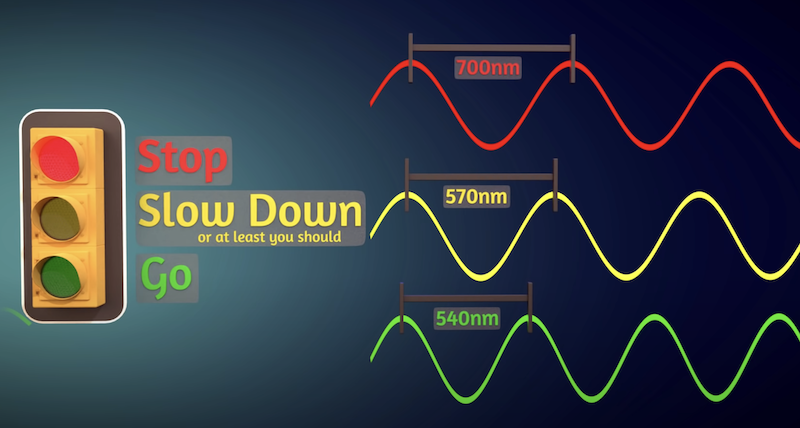
Did you ever ask yourself: how does Bluetooth work? Bluetooth is a really fascinating technology. For example, when you play music on your wireless headphones, your smartphone transmits around a million 1s and 0s to your headphones every second using Bluetooth. These 1s and 0s are assembled into 16-bit numbers which are used to build the electrical waveform that is sent to the speaker and converted into sound waves. But how are a million or so 1s and 0s wirelessly transmitted every single second between your smartphone and your wireless audio device? To understand clearly, we need to explore the engineering behind Bluetooth technology and the core principles of wireless communication.

Traffic lights
Before we get into the details, let’s start with an analogy. When a traffic light changes color, you recognize what that color change means. The traffic light uses different sections of the electromagnetic spectrum to convey information. The green light has a wavelength of around 540 nanometers, yellow is around 570 nanometers, and red is around 700 nanometers.

Your eyes can easily distinguish between these wavelengths of light, and your brain interprets them and the information they convey. Your smartphone and headphones communicate using electromagnetic waves in a rather similar fashion, but utilizing a different section of the spectrum.
2.4 GHz spectrum
Bluetooth uses waves that are around 123 millimeters in wavelength, which are invisible to the human eye and can generally pass through obstructions like walls, rather like visible light passing through glass. When your smartphone sends a long string of binary 1s and 0s to your headphones, it communicates these 1s and 0s by designating a wavelength of 121 millimeters as a 1. Conversely, it designates a wavelength of 124 millimeters as a 0. And yes, this is similar to the 540-nanometer green and 700-nanometer red traffic light colors.

Your smartphone’s antenna generates these two wavelengths and switches back and forth between them at an incredible rate of about a million times a second. This rapid switching enables your smartphone to communicate around a million 1s and 0s every single second to your headphones. Remarkably, engineers have designed the antenna and circuitry in your headphones and smartphone to be attuned to sensing and transmitting these wavelengths back and forth to one another.
Noise in the 2.4 GHz spectrum
One point of interest is that other home appliances and medical devices share Bluetooth’s frequency range of 2.4 GHz to 2.4835 GHz. For example, your microwave is in this range and has a frequency of 2.45 GHz.

When your microwave is on, it can cause your headphones to lose track of the 1s and 0s. In other words, your headphones can lose signal. But don’t think your Bluetooth headphones are dangerous because they emit a wavelength similar to your microwave’s.
Earlier I mentioned that the electromagnetic waves from Bluetooth can easily travel through obstacles like the walls. However, the microwave walls are designed to block waves of this frequency. You can test this by putting your smartphone in the microwave. The Bluetooth signal from your smartphone to your headphones will be blocked. And the connection will be lost.
In addition to microwave ovens, 2.4 GHz Wi-Fi networks operate within this range.
Alright, that wraps up the article. I hope it provided a clear answer to the question “How does Bluetooth work?” 🙂
Do you have any other questions related to headphones? Feel free to explore the “tutorials” section of my website for more helpful content, such as explanations on Wireless Charging or a Beginner’s Guide to Bluetooth Codecs.
